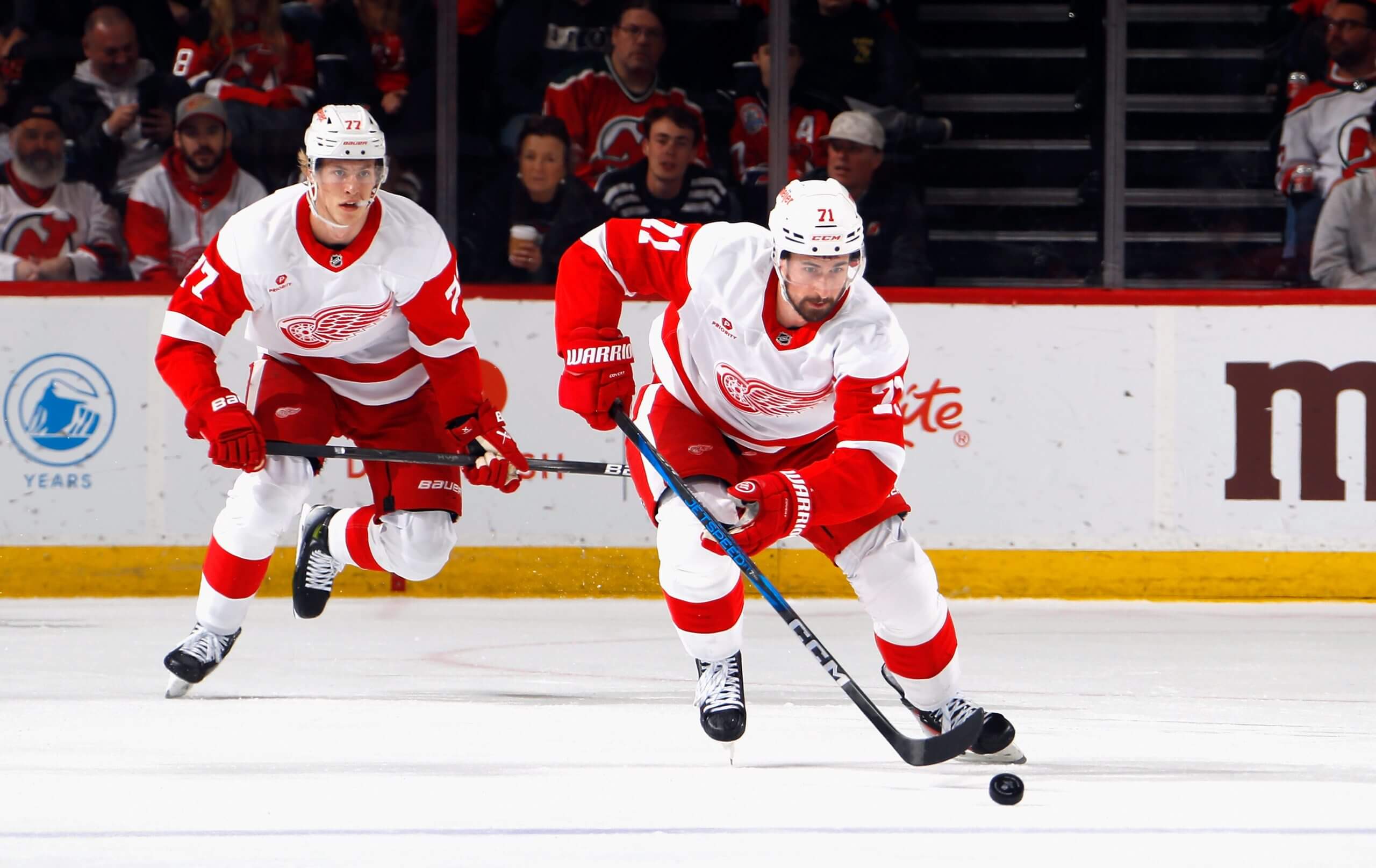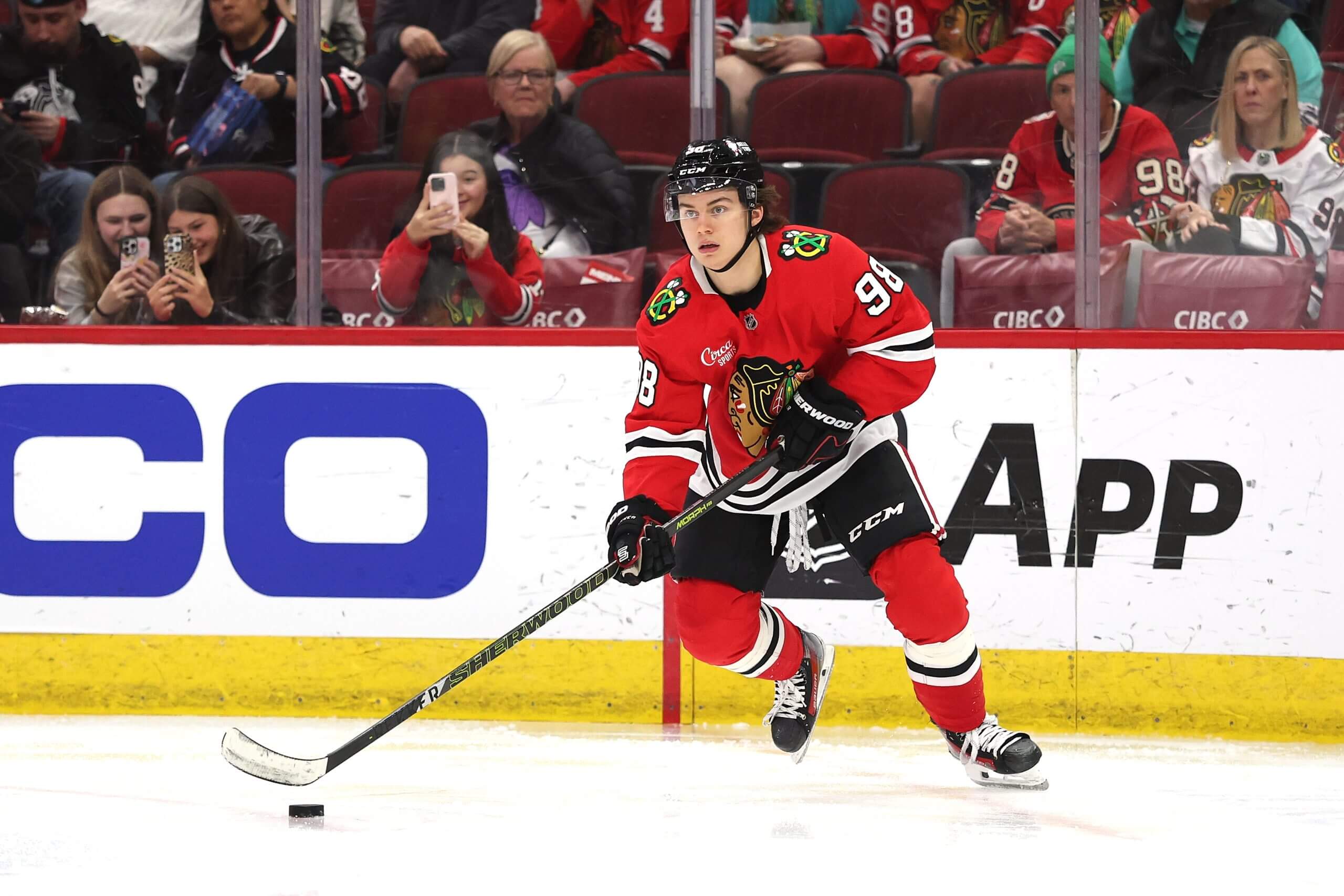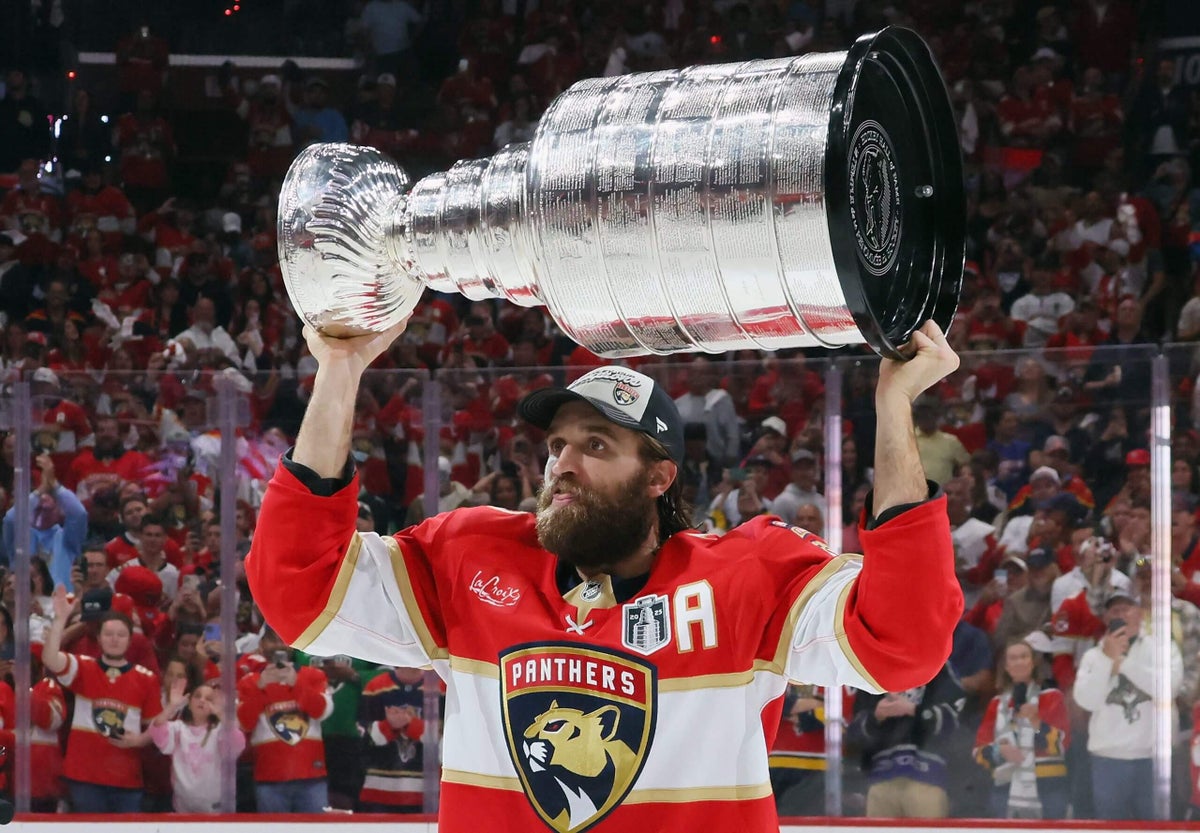With the NHL in the heart of its offseason, we put out the call for your burning questions a few weeks ago when the hockey news cycle started dying down. The response was an interesting mix of queries about changes in the CBA, the rapidly rising salary cap and how certain teams on the outside of the playoff race may get back into it, among many other topics.
There was lots of good stuff there, to be sure. Let’s dig into a few here, and we can answer more in coming the weeks as we count down to training camps opening in about a month.
Does a quickly rising cap mean less parity? — Martin D.
I think eventually we will get there, but a $95.5 million salary cap for the 2025-26 season isn’t going to do it. It just isn’t high enough, not when a lot of teams are clearing $200 million or more in annual revenue.
For one, half the league is basically spending to the cap already, and with a few unrestricted and restricted free agents still to sign, more teams will join that list by the season-opening puck drop on Oct. 7. And there really wasn’t that much roster movement overall this offseason, especially at the top end of team’s lineups.
It’s going to take time for the new CBA to affect roster construction and, by extension, team quality. Likely three or four years. We saw this offseason how much teams scrambled to lock up their existing talent and how weak an already-thin free agent class was as a result.
But how does that dynamic change if we’re talking about a cap that’s another $20 million or more north of where it is now? How is that extra $640 million league-wide going to get spent? Will it mean a major redistribution of talent, from contending teams to those trying to get better, or is it going to simply make it easier for the Floridas of the league to keep everyone in-house, like they did this summer? Will the full amount even get spent at all?
When things get interesting is if more and more teams start spending below the salary midpoint — the halfway mark between the cap and the floor — and maybe even closer to the bottom. We haven’t really seen that dynamic in the NHL before, and the league seems to be trying to guard against it somewhat by increasing revenue sharing payouts. But at some point the smaller markets aren’t going to be able to keep pace with 9 percent payroll bumps every year.
So you may end up in a place where teams that have a lot of extra money and are anxious to get better (i.e. big markets that have struggled like Chicago, Detroit and Philadelphia) are able to really blow free agents out of the water with huge offers, changing the math for pending UFAs on whether to stay where they are. And that ability to outright buy talent on a more regular basis could certainly change how big-market teams go about rebuilding or retooling their rosters.
But it’s not ever going to be like MLB — not with a hard cap. And it’s going to take star players being more willing to go to market, the way Mitch Marner did this summer, than they have been in the last 20 years under the cap. Perhaps the promise of a significantly richer payday makes that happen as more and more money floods the UFA market.
Will the Red Wings ever be a free-agent destination? Is the Yzerplan a massive failure? — Derek F.
Not a bad segue for us there, Derek.
I know Detroit was pushing for some of the top potential UFAs this summer, but as mentioned above, a lot of them didn’t end up even getting to market. Aaron Ekblad, in particular, could have signed for a much thicker average annual value in Michigan than the $6.1 million he took with Florida.
Is Detroit as sexy of a UFA landing spot as Vegas or Dallas right now? No. But it’s also not one of the teams that’s going on the top of players’ limited no-trade clauses like some other markets. It’s still an Original Six team, with a strong history and a new building, and it’s also close to home for a lot of NHLers. Patrick Kane certainly likes it there, for example.
The biggest thing working against the Red Wings, and the reason they’re having to overpay lower-tier talent to add free agents, is that they just haven’t been competitive enough. The no-state-tax factor has been talked to death, but the other thing in common between a lot of the teams that most players want to go to (or stay with) is that they win a lot of games. It’s coming up on a decade for Detroit out of the playoffs and they haven’t won a playoff round since that lockout-shortened season in 2013.
Steve Yzerman came back as general manager in 2019, so only six of those seasons are on him — and realistically, given the mess he inherited, this was a pretty long-term project. And they’ve had some bad luck in the draft lottery, dropping more than anyone in recent years and only picking in the top five once (Lucas Raymond at No. 4 in 2020).
But now is about the time you’d want to see real progress in the standings, and the second-half fall-off last season was disappointing.
The big question for the Red Wings is whether they have their elite talent base that can elevate them from wild-card contender to one of the best seven or eight teams in the league. I’m a big fan of Simon Edvinsson. Marco Kasper has flashed potential. And they have other very good prospects coming. We’ll see if their young players will be (a) high-end enough to compete with some of the best star cores in the league and (b) ready when their existing talent like Dylan Larkin isn’t in a downswing.
Adding a marquee free agent right now would be nice, obviously, but the Red Wings are not realistically an Ekblad away from contention anyway. Their biggest hope is a little more patience, as the kids start to hit their stride and some of the other contenders in the Atlantic Division age out. They should be a wild-card team this year, especially with their cap flexibility to work with in-season.
The biggest danger for a team going into a deep, years-long rebuild like Yzerman did with Detroit in 2019 is ending up stalled out in the NHL’s mushy middle. The Red Wings aren’t stuck yet, but this is a huge year for them to show more tangible progress and take the next step. The pressure is real.

Simon Edvinsson and Dylan Larkin represent two different ends of the Red Wings’ age curve. (Bruce Bennett / Getty Images)
Why do people think the Bruins have a shot at being good? As a fan, I would love it, but to see their “upgrades” in the offseason I think we’re relying on the top line to score us goals and nothing else. Feels like a recipe for disaster, especially with all these so-called tough guys that are going to make them tough to play against. That won’t matter if we don’t score any goals. I just don’t understand it honestly and some national writers are believing they’ll bounce back. They are a worse team than last year all over. — Jacob M.
I’ll be shocked if they’re not better than last season, although that’s not saying much. Boston cratered so hard at the end of the year that they finished with the NHL’s fourth-worst record, better than only Nashville, Chicago and San Jose.
Their late-season collapse was a work of art as far as midyear teardowns go, as they won just six of their final 27 games and dealt away Brad Marchand, Charlie Coyle, Trent Frederic, Brandon Carlo and Justin Brazeau. Hampus Lindholm missed nearly the entire year, Charlie McAvoy was hurt and Jeremy Swayman was a shell of himself after that contract dispute ran long.
It’s hard to see that big of a trainwreck hitting them twice.
As far as being good, though, it depends how you define that. They’re definitely thinner up front, where it’s going to take some surprises from their young players to keep them competitive. But I could still see them in competition for a wild-card spot, given the talent they still have. Their path to competing with the contenders, however, is pretty murky right now, given last year’s selloff, their meager prospect pool and all of their holes.
I know the Capitals’ surprising rise has a lot of GMs believing in a retool versus a rebuild, so I suspect we’ll see more teams try to go down that path, but most of those clubs feel likely to get stuck being just okay and not really competing for a Cup. Boston feels like they’re about to be part of that trend, especially given how they spent their limited free agent dollars last month.
Hard to believe, given that the Bruins ran away with the Presidents’ Trophy only two years ago.
With NCAA players eligible for pay and the majority of draftees not league ready anyways, would there be a desire to raise the draft age so teams could see more immediate returns on draft picks? — Jack H.
I’ve long been of the mind that the change that would make sense would be to allow 18-year-olds to only be drafted in the first round. That way the elite players who will have a chance to play in the NHL right away can still get a pro home at a young age, but everyone else has to wait for another year of development.
How many players picked beyond the top 32 picks make the NHL right after being drafted anyway? Almost none. And teams tend to have a very hard time projecting a lot of 18-year-old players, especially at notoriously hard-to-project positions like in goal.
Such a change could up the degree of difficulty for teams given that they’ll have to decide between players of different age groups. Do you use your first-rounder on a 19-year-old who is more of a sure thing or take a bet on upside with a younger pick?
That said, I’m looking at this from the perspective of someone whose primary focus is covering the NHL. I was curious what one of our prospect writers thought, so I sent Scott Wheeler a note on this earlier this week.
He doesn’t agree that a change is needed.
“Teams do a pretty good job with all of the available resources now identifying the kids who will play, even at 18,” Wheeler explained, noting how few good players actually get missed in the early rounds and are taken late. “Those players also create interest from fans and revenue for the lower levels of the pyramid in junior and college once they’re tied to an organization for longer. I think the 18-year-old draft is good for the sport across levels.”
The other thing that Scott pointed out is that with the new CBA changing to a system where every drafted player’s rights are now held until they’re 22 years old, it makes it a more level playing field for players coming from the various leagues. “The kids who were getting hurt (by an 18-year-old draft) — CHL players who teams had to decide on quickly — will now have more time to showcase themselves,” he said.
Personally, I don’t see the harm in having some kids wait to get picked, giving teams more viewings of them in prominent roles before having to make a decision. The average age of draft picks in other Big Four sports like football and baseball, where they’re typically drafting out of college, is significantly higher, and it seems to work well there.
With more top hockey players headed to the NCAA in the new system, this conversation of how to shift things more in line with those leagues probably isn’t going anywhere.

2025-26 seems poised to be another long season for Connor Bedard and the Blackhawks. (Stacy Revere / Getty Images)
Are the Blackhawks going to finish 30th to 32nd next season or do you think they could reach the mid-20s? — John N.
Goaltending is a big wild card there, with Spencer Knight in place for a full season and the potential return of Laurent Brossoit. But it certainly feels like there will be more pain coming in Chicago.
I actually thought they made the right move with a pretty quiet offseason this year. There was talk at the combine that perhaps GM Kyle Davidson would be really aggressive, throwing huge money at the Marners of the world, but instead they’ve left open nearly $20 million in cap space to try and accumulate future assets and aim for a rise up the standings in another couple years.
It’s going to mean a frustrating season at times for players like Connor Bedard, but trying to fast-track what they’re doing there could have been a disaster. As mentioned with the Red Wings, it’s a long road going full-rebuild in the NHL right now, even if everything breaks your way and you win some lotteries. If Chicago had signed a big-name UFA this summer, that huge-salaried star could be well onto the wrong side of the aging curve by the time they’re ready to contend and still making big money.
Contrast that with the upside of adding another pick at the top of a strong 2026 draft, and it’s a no-brainer decision.
I think Chicago will be closer to the 70-75 points range than the 61 they had last year, but that likely still puts them bottom three, given that basically no one around them is trying to bottom out and be bad. (Which could change early in the year with Gavin McKenna as the prize at first overall.)
Our Blackhawks expert Scott Powers concurs.
“I think it’s between them and San Jose for the bottom of the league,” Powers said. “The defense will be so young. Even if Bedard and Frank Nazar take significant steps, there are still questions where enough offense will come from. They could be better than expected because they have a lot of potential promising pieces, even in net, and new coach Jeff Blashill’s effect is unknown, but it still feels early for them to turn the corner and nearly every other team is trying to win now.”
Thanks for reading. As mentioned, I have a few more of these queued up, so stay tuned for that.
Plus, sign up for our hockey newsletter for more similar content from myself and Sean McIndoe all year.
(Top photo of Aaron Ekblad: Bruce Bennett / Getty Images)
